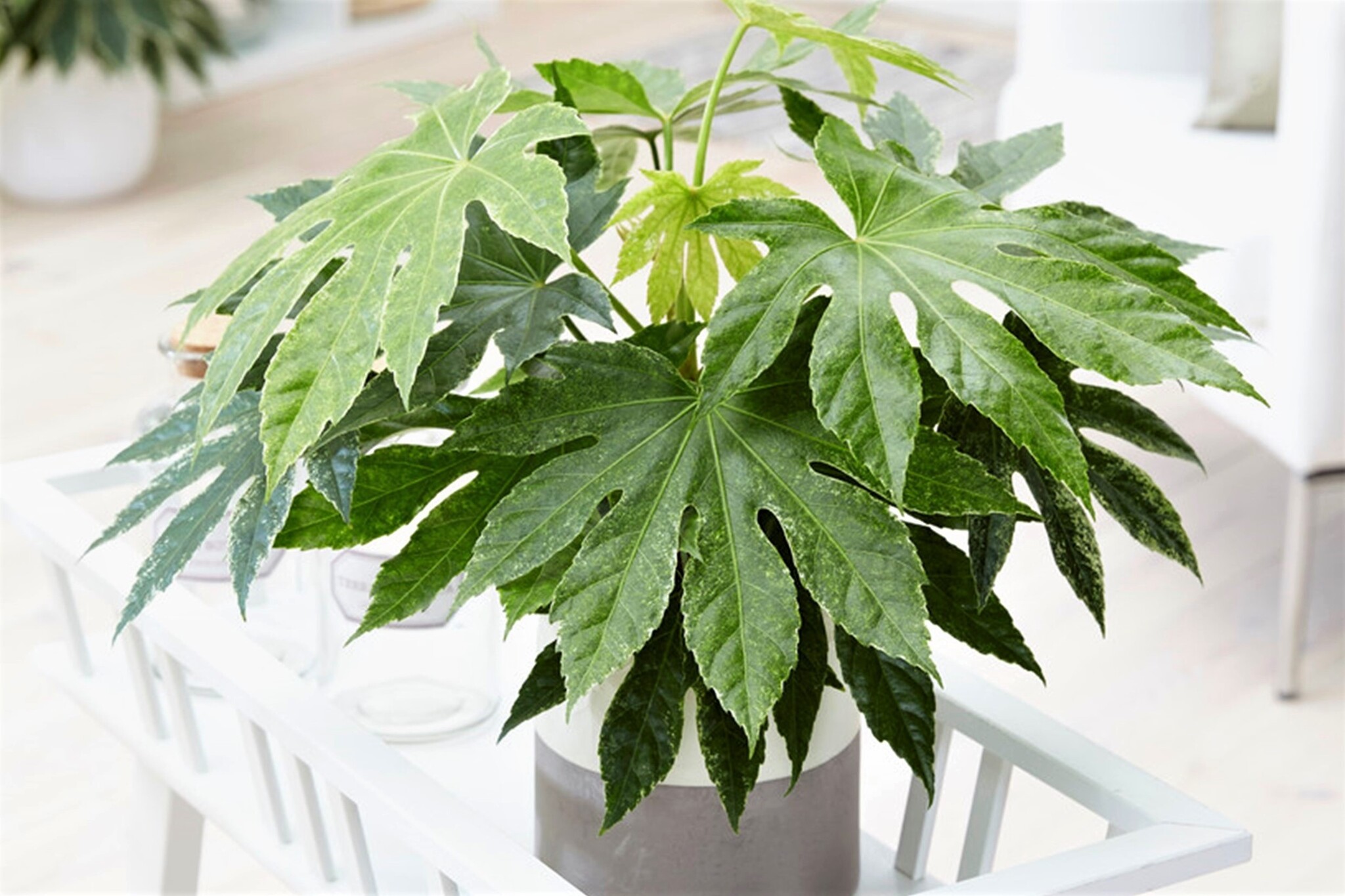
Fatsia Information & tips - Plant Guide
- Needs little water
- Semi-shade, no direct sunlight
- Lightly air-purifying
- Nutrition every month (summer)
- Not toxic for animals
- Repot every other year
Intro
Fatsia Spiderweb is also known in the Netherlands as The Finger Plant thanks to its leaves which look like hands and have various colourful drawings in white and green. It is a plant that can stand both inside and outside. Outside, however, attention must be paid to frost and large temperature fluctuations. The plant cannot stand this.
Location
Fatsia is very sensitive to temperature fluctuations. The plant can be placed in the garden or in the room, but care should be taken during cold nights and hot days when the plant is outside. This can be fatal for the plant given the temperature fluctuations.
Temperature
A minimum temperature of 16 degrees Celsius is recommended during the day and a minimum temperature of 4 degrees Celsius at night.
Watering
Generally give moderate watering, in the growth period from March to August slightly more than in winter. You can let the soil dry out slightly before watering again. However, do not leave the roots in the water, this causes root rot.
Substrate
If the pot is provided (or you provide it yourself) with a substrate and a water meter, watering is easy! Upon arrival there is little water in it, fill the pot slowly with water (sometimes wait a while) and you will see that the meter will rise automatically. All you have to do is keep an eye on this meter. If you go on holiday you can fill the pot almost half full (you can see this on the meter which then rises a bit above its maximum) and you can safely leave for 3 weeks. It is also not bad if the plants do not get water too much and too fast. The substrate absorbs the water, so when the water meter is at the bottom, the substrate is still moist, but there is no water left at the bottom of the pot. The plant still has enough space for 4 summer days.
Spraying
Spray the Fatsia occasionally to remove dust from the leaves and prevent vermin. Spraying also improves the quality and ornamental value of the houseplant.
Leaf damage
If a Fatsia gets discoloured leaves, it is probably because of too much water. The lower leaves will hang over time, this is a natural process, simply cut these leaves off.
Nutrition
The Fatsia needs little food. After purchase the Fatsia can be left without food for months. Feed only in spring or summer. Never give too much this can lead to burning of the roots. Look at the packaging for the correct dosage.
Repotting
A Fatsia is best repainted in a larger pot immediately after purchase. The best period for repawing is spring. A larger pot will stimulate the growth and the advantage is a larger buffer of soil so that the water is spread more and there is less chance of root rot. Always take a pot that is 20 to 25% larger and do not use Hydro grains on the bottom of the pot. It is best to use a plastic insert sleeve for large pots.
Origin
The origin of the Fatsia is East Asia. The Fatsia has a tough appearance because of its large leaves. The houseplant requires little maintenance, can be in the semi-shade and is therefore very suitable for offices.
Diseases
Unfortunately, the Fatsia is susceptible to pests and diseases. Often occurring are lice, how and why this can occur is hard to say. It can be by draught or its natural environment (forest)

